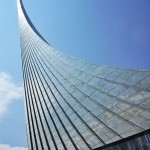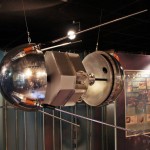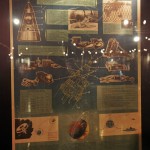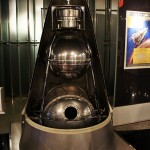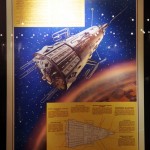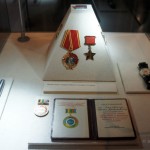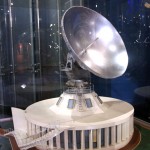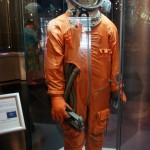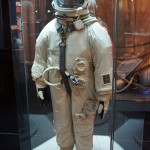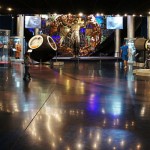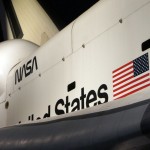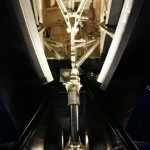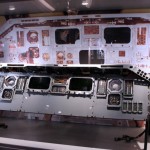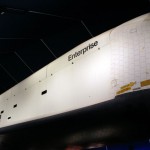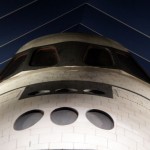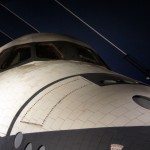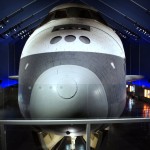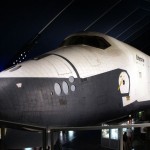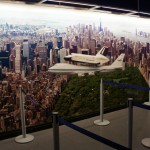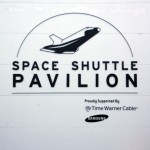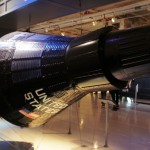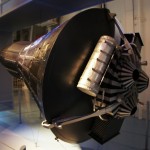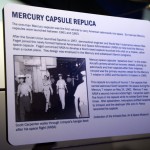Please bear with us as we upgrade to a new version of our content management solution tonight – the site might go down for a few minutes, so do check back in a bit later should you stumble upon it.

The Memorial Museum Of Cosmonautics (Moscow) – 1
- The Memorial Museum Of Cosmonautics in Moscow
- The Memorial Museum Of Cosmonautics in Moscow
- The Memorial Museum Of Cosmonautics in Moscow
- The Memorial Museum Of Cosmonautics in Moscow
- The Memorial Museum Of Cosmonautics in Moscow
- The Memorial Museum Of Cosmonautics in Moscow
- The Memorial Museum Of Cosmonautics in Moscow
- The Memorial Museum Of Cosmonautics in Moscow
- The Memorial Museum Of Cosmonautics in Moscow
- The Memorial Museum Of Cosmonautics in Moscow
- The Memorial Museum Of Cosmonautics in Moscow
- The Memorial Museum Of Cosmonautics in Moscow
- The Memorial Museum Of Cosmonautics in Moscow
- The Memorial Museum Of Cosmonautics in Moscow
- The Memorial Museum Of Cosmonautics in Moscow
- The Memorial Museum Of Cosmonautics in Moscow
- The Memorial Museum Of Cosmonautics in Moscow
- The Memorial Museum Of Cosmonautics in Moscow
- The Memorial Museum Of Cosmonautics in Moscow
- The Memorial Museum Of Cosmonautics in Moscow
- The Memorial Museum Of Cosmonautics in Moscow
- The Memorial Museum Of Cosmonautics in Moscow
- The Memorial Museum Of Cosmonautics in Moscow
- The Memorial Museum Of Cosmonautics in Moscow
- The Memorial Museum Of Cosmonautics in Moscow
- The Memorial Museum Of Cosmonautics in Moscow
- The Memorial Museum Of Cosmonautics in Moscow
- The Memorial Museum Of Cosmonautics in Moscow
- The Memorial Museum Of Cosmonautics in Moscow
- The Memorial Museum Of Cosmonautics in Moscow
(updated August 17 2013)

The Intrepid Sea, Air and Space Museum (New York City) – 1
- The Intrepid Sea, Air and Space Museum in New York City
- The Intrepid Sea, Air and Space Museum in New York City
- The Intrepid Sea, Air and Space Museum in New York City
- The Intrepid Sea, Air and Space Museum in New York City
- The Intrepid Sea, Air and Space Museum in New York City
- The Intrepid Sea, Air and Space Museum in New York City
- The Intrepid Sea, Air and Space Museum in New York City
- The Intrepid Sea, Air and Space Museum in New York City
- The Intrepid Sea, Air and Space Museum in New York City
- The Intrepid Sea, Air and Space Museum in New York City
- The Intrepid Sea, Air and Space Museum in New York City
- The Intrepid Sea, Air and Space Museum in New York City
- The Intrepid Sea, Air and Space Museum in New York City
- The Intrepid Sea, Air and Space Museum in New York City
- The Intrepid Sea, Air and Space Museum in New York City

How to get hired by a spaceline
As is becoming more obvious every day to those reading up on the latest in space travel, humanity will soon enter a new era. The day a friend or family member will be sitting at the dinner table, talking about how an acquaintance flew into space with one of these entrepreneurial companies will not be as far of as you might think. But how does the younger generation get to work for one of these groundbreaking start-ups (and let’s not rule out the likes of Lockheed Martin and Boeing who have their own projects on the go too)? Queue William Pomerantz, Virgin Galactic‘s Vice President for Special Projects who did an interview for EngineeringBecause (a social network for engineering students) which you can read in its entirety here. What you should take away from this is that this is not just a dream anymore. You could in fact apply to work on building a spaceship, right now!
“If you are early in your career and looking for your first job, you have an unprecedented level of choice about what kinds of projects to work on, what type of working environment to work in et cetera”, Pomerantz says, and he is absolutely right. If you are an engineer or technician (and are willing and able to relocate to the US in most cases) who thinks they should be a part of creating one of the first private spaceships, check out the links below and start applying! The Enterprise did not build itself you know…
Career links for (in alphabetical order – feel free to submit additional companies):
Blue Origin: http://www.blueorigin.com/careers/
Orbital Sciences Corporation: http://www.orbital.com/Careers/
Lockheed Martin: http://www.lockheedmartinjobs.com/index.aspx
Reaction Engines: http://www.reactionengines.co.uk/careers.html
SpaceX: http://www.spacex.com/careers
Virgin Galactic: http://www.virgingalactic.com/careers/
XCOR Aerospace: http://www.xcor.com/jobs/
Another fact to observe from the above career boards: you don’t actually have to be an engineer or technician to work for one of the coolest companies in the world. XCOR is hiring a HR Manager currently, while Virgin Galactic is hiring an Executive Assistant, SpaceX has many Intern positions open and several companies amongst them positions related to Business or Program Management open. Engage!

Virgin Galactic is expanding at the top
Sir Richard Branson‘s Virgin Galactic is pushing things into high gear, with the recent appointment of two heavy hitters. At the start of July it announced the appointment of Doug Shane as Executive Vice President and General Manager of The Spaceship Company (TSC) which as you might remember from reading here, began as a joint venture between Virgin and Scaled Composites (Scaled) to build a fleet of spaceships. Shane will be overseeing the manufacturing company and it looks like they could not have picked a better person. His 31 year career at Scaled saw him being their test pilot, Director of Flight Operations and VP of Business Development, before serving as President for the past five years after the retirement of company founder Burt Rutan.
Then 2 weeks later, it made another big appointment by making Steven J. Isakowitz President of Virgin Galactic, where he already served as Executive Vice President and CTO since joining in 2011. This is a man who worked for NASA, was the CFO of the U.S. Department of Energy through two presidential administrations, served as Branch Chief of Science and Space Programs at the White House and was an aerospace engineer and project manager for Lockheed Martin. Bags of experience would be an understatement!
Virgin Galactic seems to be on track to become the world’s first commercial spaceline alright, making the right moves to establish itself as the benchmark organisation as it expands in preparation for commercial operations. 2014 is going to be one exciting year!
“Our story is the story of the universe. Every piece of everyone, of everything you love and everything you hate, of the thing you hold most precious, was assembled by the forces of nature in the first few minutes of the life of the universe, transformed in the hearts of the stars or created in their fiery deaths. And when you die, those pieces will be returned to the universe in the endless cycle of death and rebirth. What a wonderful thing it is to be part of that universe. And what a story, what a majestic story.”
– Professor Brian Cox (1968)

How to put a human on Mars
When the BBC starts making interactive sites ( http://www.bbc.co.uk/news/science-environment-23349496 ), you know something is a hot topic, so read on… Scientists at Imperial College London have designed a concept mission to land astronauts on Mars.
It would entail a craft existing of two parts: the Martian lander with a heat shield, in which the crew would also ascent into Earth orbit, and a cylindrical craft split into three floors. Travelling through space for long durations brings up major issues, perhaps the most important one being the muscle and bone wastage that weightlessness causes, which would render astronauts unable to walk upon arrival at their destination. To prevent this, the team explains that the two parts would, once in space, unwind from eachother on a steel cable. Short truster bursts would then set in motion the rotation needed to generate artificial gravity similar to Earth’s.
Aside from the deconditioning of the human body, another cause for concern is solar and cosmic radiation. Several solutions are proposed, including running water within the shell of the cruise craft to absorb the radtiation, while another solution would mean fitting superconducting magnets to the craft that would generate a magnetosphere similar to Earth’s.
You can read the full article here: http://www.bbc.co.uk/news/science-environment-22952441
As more prominent organisations start to report of the possibilities of the first human visit to Mars, and the race to launch paying customers into space is heating up. But colonizing another planet, can you imagine? We already introduced the Inspiration Mars Foundation, headed up by business tycoon Dennis Tito. Another project out there is the Dutch Mars One which will be looking to establish a permanent human settlement on Mars in 2023 – talk about being ambitious! And then of course there is billionaire inventor Elon Musk of SpaceX who has also plans to visit the Red Planet, possibly permanently.
We might see the day when we will look up at the sky, and see our second home, like a red dot in a vast ocean of space. It might make us redefine our place in the universe… who knows.
“Star Trek was an attempt to say that humanity will reach maturity and wisdom on the day that it begins not just to tolerate, but take a special delight in differences in ideas and differences in life forms. […] If we cannot learn to actually enjoy those small differences, to take a positive delight in those small differences between our own kind, here on this planet, then we do not deserve to go out into space and meet the diversity that is almost certainly out there.”
– Gene Roddenberry (1921 – 1991)

Reaction Engines
There are several companies out there – including Virgin Galactic and XCOR Aerospace to name but a few – who are looking to monetize space tourism. But there is another company out there which recently got a £60 million investment from the UK government to build a full scale prototype for its revolutionary engine design. That company is called Reaction Engines Ltd (REL), based in Oxfordshire, England. Their spaceship designs are all purely in the concept stage for now, Skylon being the most talked about one. But what makes them really interesting is their SABRE engine technology.
While a working prototype still has to be build, these SABRE engines are ignited in air-breathing mode, burning hydrogen fuel with air. That air must then be heavily cooled (we are talking astronomical multipliers here) by heat exchangers before it can be used in the SABRE engines. Reaction Engines wants to use the technology on a unique spaceplane, which will in their vision have the capability of taking people to Earth’s stratosphere in just 15 minutes. Perhaps equally interesting is that it won’t just be a few people going up – they envision Skylon to have capacity for over two dozen passengers depending on configuration!
Obviously there are many more milestones to achieve for the company, and their 2019 goal for launching operational flights seems overly ambitious but nonetheless this is a company worth keeping an eye on. For now, enjoy the below animation of Reaction Engines‘ A2 vehicle, which would use Scimitar engines – basically the non-spaceflight version that has a much longer life span as a result. A flight from the UK to Australia would be covered in less than four hours!

Inspiration Mars Foundation
A few weeks ago we wrote about Dennis Tito, the first paying passenger to go into space. Earlier this year, Tito announced the formation of the Inspiration Mars Foundation, a nonprofit organisation with a very specific short-term objective: sending a two-person American crew on a historic journey within 100 miles around the Red Planet and return to Earth safely. Tito has experience with this type of flyby missions from his days as a scientist at the NASA Jet Propulsion Laboratory but this one pushes the envelope much further – no human has ever traveled to another planet.
Also interesting is that the Foundation is pushed for time to reach its objective – in 2018 both planets (Earth and Mars) will align, offering a unique orbit opportunity to travel to Mars and back in just 501 days. You can check out the announcement made earlier this year below:
As Tito says during the announcement, space is very complex and there is a lot to learn, even when the outline of the mission is simple. More on the Inspiration Mars Foundation soon hopefully, as they get closer to their objective!






